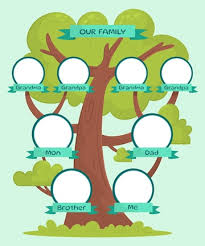Unveiling the Roots of Our Family Tree: A Journey of Discovery
Exploring the Branches of Our Family Tree
Our family tree is more than just a collection of names and dates; it is a living testament to our heritage and identity. Each branch represents a unique story, a connection to our past, and a link to our future.
As we delve into the depths of our family history, we uncover tales of triumph and tragedy, stories of love and loss, and legacies that have shaped who we are today. Through exploring our family tree, we gain a deeper understanding of ourselves and our place in the world.
Every ancestor on our family tree has played a role in shaping our lives. Their experiences, values, and traditions have been passed down through generations, influencing the way we think, act, and perceive the world around us.
By tracing our lineage back through the generations, we not only honor the sacrifices and achievements of our ancestors but also gain insight into the challenges they faced and the resilience they demonstrated. Our family tree becomes a tapestry woven with threads of courage, perseverance, and love.
As we add new branches to our family tree with each passing generation, we contribute to an ever-expanding legacy that will be passed down to future descendants. By preserving and sharing our family history, we ensure that the stories of those who came before us will continue to inspire and guide generations to come.
So let us continue to explore the branches of our family tree with curiosity, reverence, and gratitude. For in doing so, we not only connect with our past but also plant seeds for future growth and understanding within our own family circle.
Exploring Your Ancestry: Answers to Common Questions About Family Trees
- What is the oldest bloodline in the world?
- How do I find my real family tree?
- How can I see family trees for free?
- How do I get a full family tree?
What is the oldest bloodline in the world?
The question of the oldest bloodline in the world is a fascinating inquiry that has intrigued historians, genealogists, and researchers for centuries. While pinpointing a definitive answer may prove elusive due to the complexities of tracing lineages across vast stretches of time, various ancient civilizations and royal families have claimed to possess some of the oldest documented bloodlines. From the pharaohs of ancient Egypt to the dynasties of China and the monarchies of Europe, each lineage carries with it a rich tapestry of history, tradition, and cultural significance that continues to captivate our imagination and spark further exploration into the origins of humanity’s diverse familial connections.
How do I find my real family tree?
To uncover your real family tree, embark on a journey of genealogical exploration that involves diligent research, careful documentation, and a keen eye for historical records. Start by gathering information from living relatives, family documents, and heirlooms to establish a foundation for your search. Utilize online genealogy databases, archives, and libraries to trace back your ancestry through birth certificates, census records, marriage licenses, and other vital documents. Engage with local genealogical societies and experts to navigate any roadblocks or gaps in your family history. By piecing together these clues and connections, you can gradually unveil the branches of your real family tree and discover the rich tapestry of your heritage.
How can I see family trees for free?
To access family trees for free, there are several online platforms and resources available that offer genealogical databases and tools at no cost. Websites like FamilySearch, MyHeritage, and Ancestry.com provide options for creating and viewing family trees without requiring a subscription fee. Additionally, local libraries, historical societies, and archives often offer free access to genealogical records and resources that can help individuals research and build their family trees. By utilizing these free resources effectively, individuals can uncover valuable information about their ancestors and expand their understanding of their family history without incurring any financial expenses.
How do I get a full family tree?
To obtain a full family tree, it is essential to start by gathering as much information as possible about your ancestors and their relatives. Begin by documenting details such as names, dates of birth, marriage, and death, as well as any other significant events or relationships. Utilize various resources such as family records, historical documents, census data, and online genealogy databases to piece together the branches of your family tree. Additionally, consider reaching out to living relatives for valuable insights and connections that can help fill in missing pieces of the puzzle. Building a comprehensive family tree is a gradual process that requires patience, thorough research, and a willingness to explore multiple sources to uncover the rich tapestry of your ancestral history.

